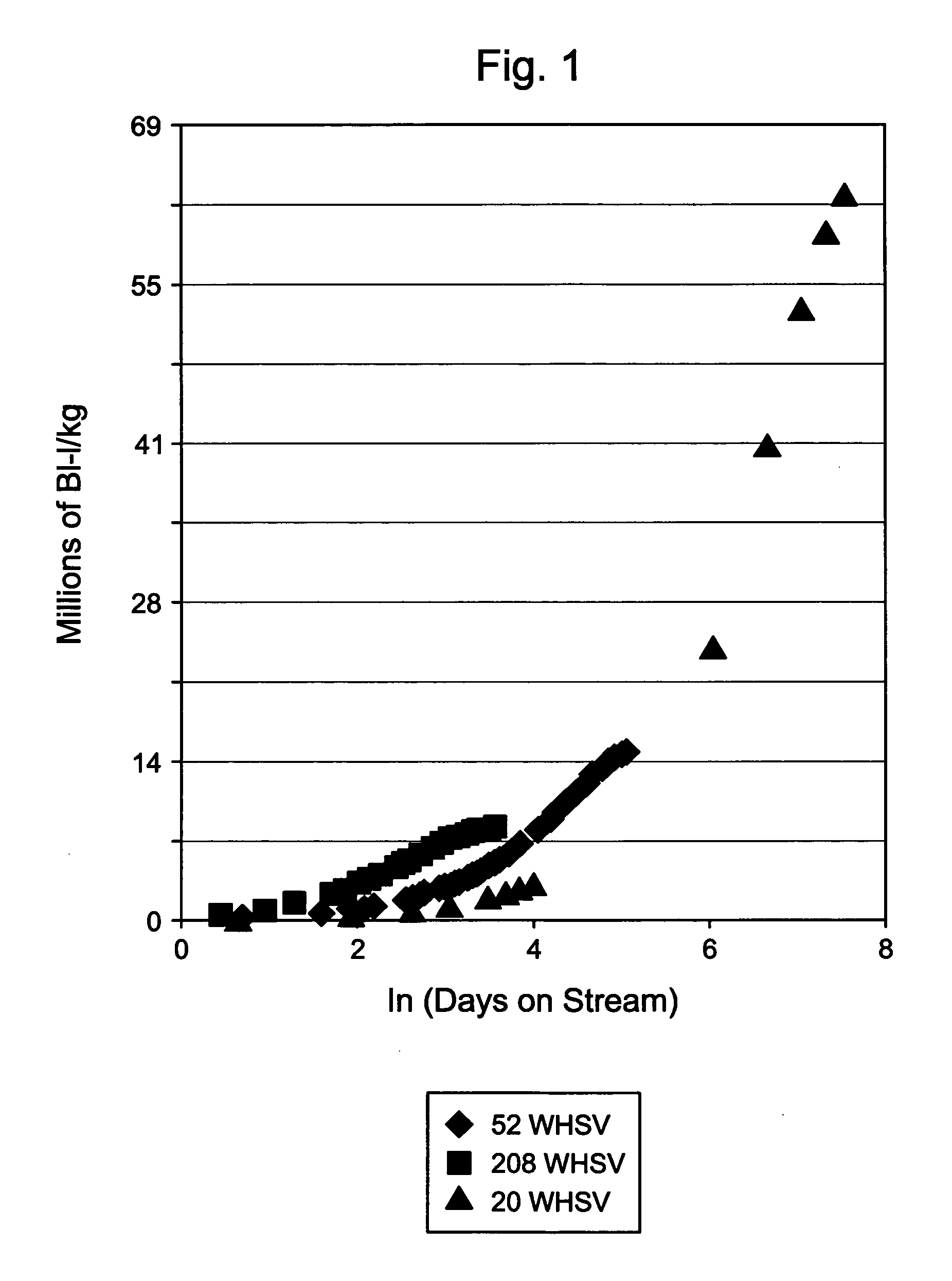Process for reducing bromine index of hydrocarbon feedstocks
- Summary
- Abstract
- Description
- Claims
- Application Information
AI Technical Summary
Benefits of technology
Problems solved by technology
Method used
Image
Examples
example 1
[0064] A feed A was treated with a catalyst having 50 vol. % MCM-22 catalyst and 50 vol. % F-24 clay at temperature of 200° C., WHSV 1 hr−1, and pressure 1480 kPa-a (200 psig). The operating temperature was raised to 205° C. during the test for the purpose of maintaining unit BI removal activity. The cycle-length was 170 days to maintain a product BI specification of less than 10.
example 2
[0065] A feed A was treated with a catalyst having 100 vol. % F-24 clay catalyst at conditions identical to Example 1. The operating temperature was raised to 205° C. during the test for the purpose of maintaining unit BI removal activity. The cycle-length was 35 days to maintain a product BI specification of less than 10.
[0066] Examples 1 and 2 show that 50 vol. % MCM-22 / 50 vol. % F-24 clay is 5 times more stable than 100 vol. % clay
example 3
[0067] A feed B was treated with a catalyst having 50 vol. % MCM-22 catalyst and 50 vol. % F-24 clay at temperature of 190° C., WHSV 1 hr−1, and pressure of 1480 kPa-a (200 psig). The temperature was raised to 195° C. after two months on-oil and further raised to 200° C. after six months on oil. After 13 months on oil the product BI remained between 80 and 150 at 200° C. The projected cycle-length was more than 800 days.
PUM
 Login to View More
Login to View More Abstract
Description
Claims
Application Information
 Login to View More
Login to View More - R&D
- Intellectual Property
- Life Sciences
- Materials
- Tech Scout
- Unparalleled Data Quality
- Higher Quality Content
- 60% Fewer Hallucinations
Browse by: Latest US Patents, China's latest patents, Technical Efficacy Thesaurus, Application Domain, Technology Topic, Popular Technical Reports.
© 2025 PatSnap. All rights reserved.Legal|Privacy policy|Modern Slavery Act Transparency Statement|Sitemap|About US| Contact US: help@patsnap.com

